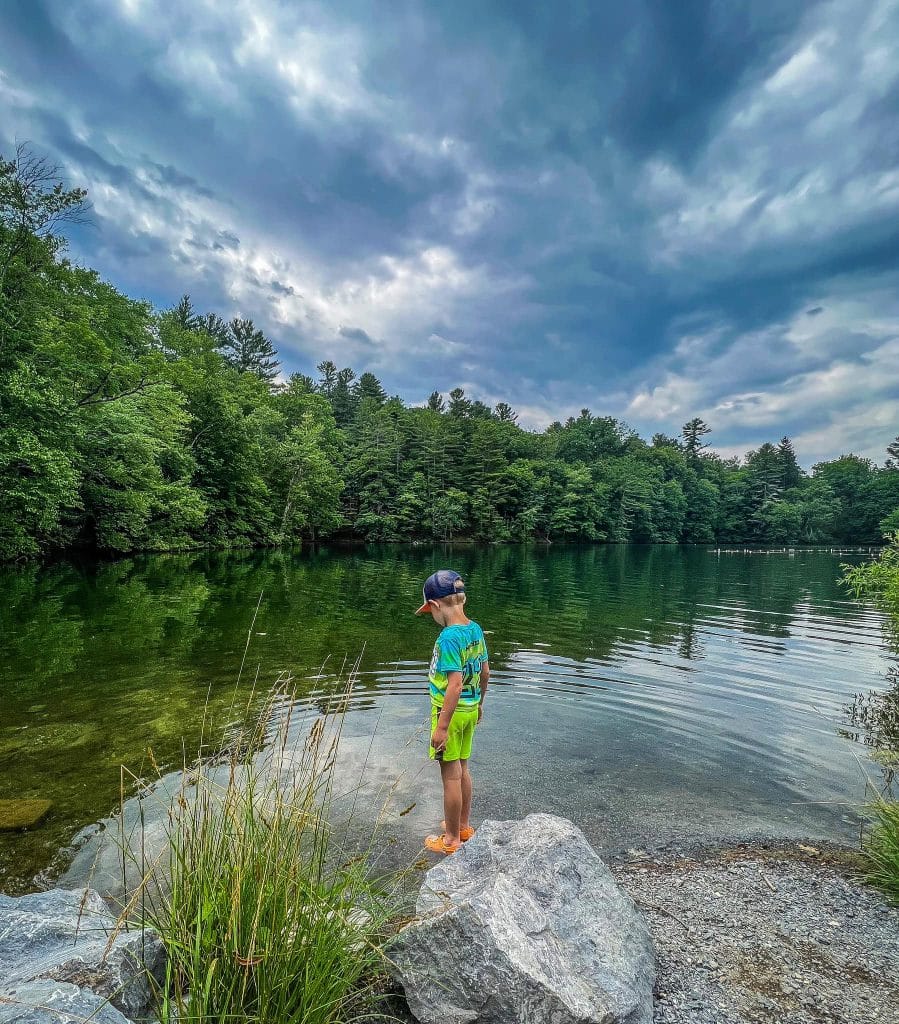Our Place
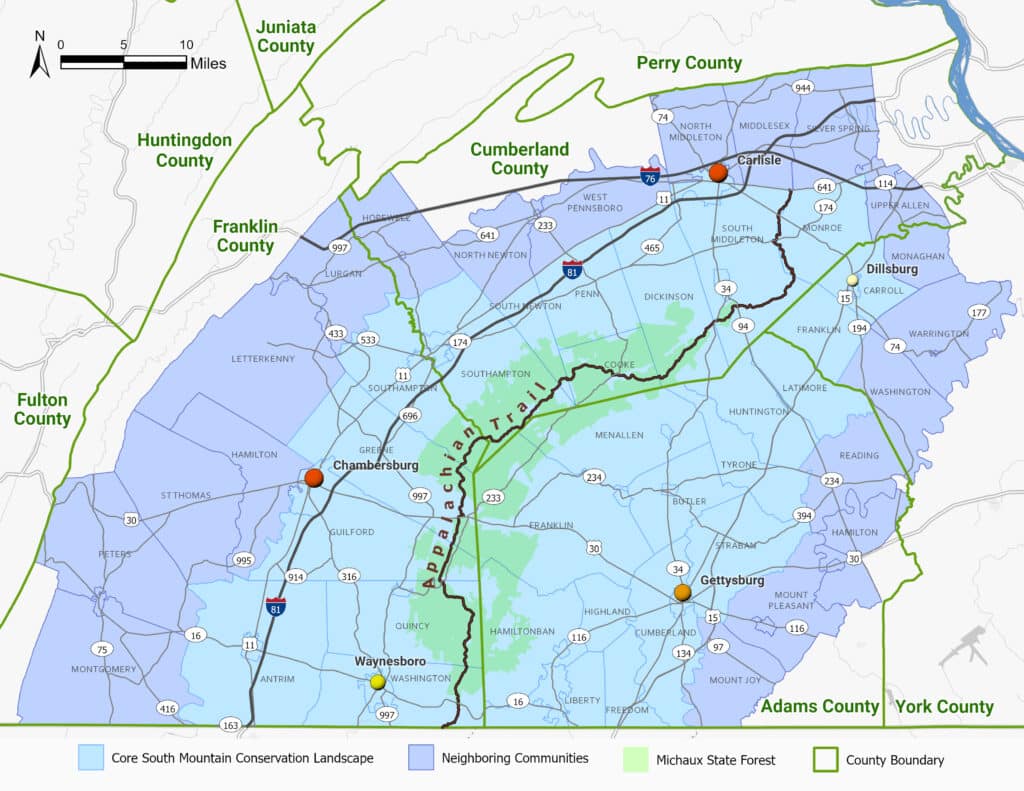
About the Region
The South Mountain landscape is a distinct area of south-central Pennsylvania that is nearly a half-million acres in size and includes portions of Adams, Cumberland, Franklin and York counties. The folds of forested uplands that forms the South Mountain ridgeline run in a generally north-south direction and reach elevations of nearly two thousand feet. This ridgeline is the northern terminus of the Blue Ridge Mountains, a main geologic province of the Appalachian Mountains that originates in northern Georgia and ends here in south-central Pennsylvania.
There is more to the South Mountain landscape though: the forested uplands are surrounded by lower-laying, fertile valleys that have been inhabited and used as important transportation corridors since the Native America era. The Cumberland Valley is part of the “Great Valley,” a series of valley lowlands within the Appalachian Mountains system that stretches from northern Alabama to southern Canada.
Nearly one million people live within the four-county area of Adams, Cumberland, Franklin and York counties, and these people live amongst a wealth of unique natural and cultural features.
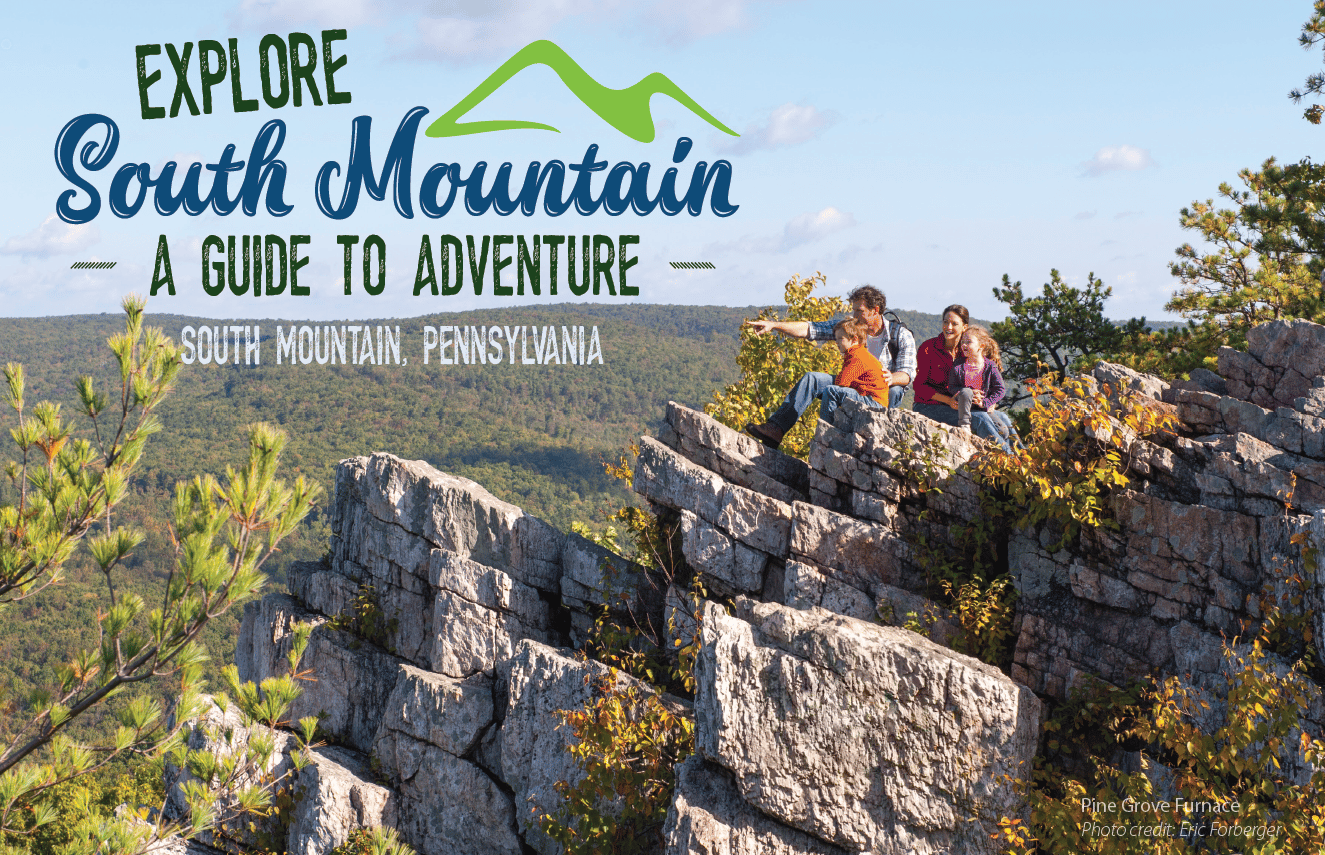
South Mountain Adventure Guide
The perfect size to stow in your glove box, this publication celebrates the South Mountain and is your perfect friend to explore with. This publication was created as an Executive Summary of the South Mountain Cultural Landscape Assessment.
DCNR Conservation Landscapes
A decade ago the Pennsylvania Department of Conservation and Natural Resources (DCNR) launched a “Conservation Landscape” program with the belief that a broader, regional approach could profoundly impact local communities by advancing the protection of important natural assets. Adopting an integrated approach of working with state parks and forests, the landscapes surrounding these public lands, and the communities therein, DCNR’s Conservation Landscape program drives strategic investments around themes of conservation, community revitalization and sustainability in special landscapes across Pennsylvania. DCNR has designated seven Conservation Landscapes within the Commonwealth.
The Conservation Landscape work is value-driven and place-based. The seven unique Conservation Landscapes all contain rich natural assets and important public lands, but equally importantly these regions each have a vibrant local sense of place. As such, DCNR prioritizes a highly collaborative process: by getting community leaders, other state agencies, local governments, philanthropies and nonprofits all engaged around common goals – motivated by a strong sense of place – it is much easier to tackle effective conservation and community revitalization. Though DCNR launched the Conservation Landscapes program and continues to support it, the emphasis is on local partners collaborating in conservation and community revitalization, thereby ensuring community engagement and empowerment.
“Imagine a place where vibrant communities draw strength from their natural assets to sustain their quality of life. A place where citizens care about protecting the special qualities of a region – their region. A place where people and partners band together to envision a better economic future, tackle shared challenges and care for the natural, scenic, and recreational resources that define the place they call home. This is a Conservation Landscape.”
Landscape Resources
Here in south-central Pennsylvania, the South Mountain landscape boasts of a surprising convergence of diverse natural and cultural resources – resources that make the landscape unique and special. The South Mountain Partnership identifies four “Landscape Resources” as central to this region’s unique essence:
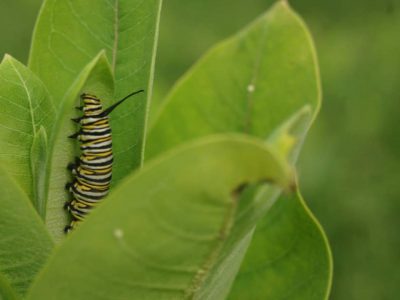
Natural Resources
Mountains, Forests, Rivers and Streams, Vernal Ponds, Wildlife, Habitat Corridors, and Bird Flyways
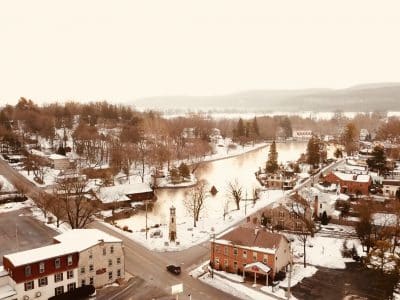
Cultural Resources
Gettysburg and Civil War History, Furnace Stacks, Museums, Historic Barns, the State’s First State Forest and Oldest State Park, Arts and Creative Industries.
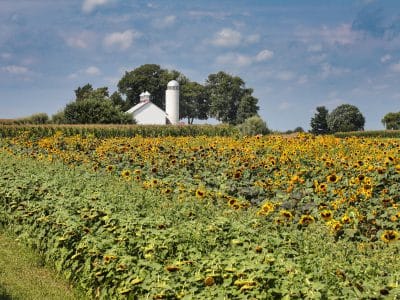
Agricultural Resources
Fertile Soil, Rolling Valleys, Hayfields and Cornfields, Dairy Cows, Fruit, and Farm Stands
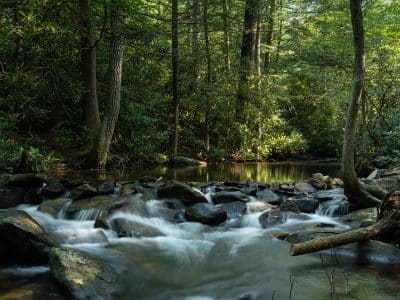
Recreational Resources
The Appalachian Trail, World-Class Trout Fishing, Country Roads, and Multiple State Parks
The South Mountain Landscape Features
- The 85,000-acre Michaux State Forest
- The headwaters of high quality streams and the groundwater source of much of our clean, pure drinking water
- Native American quarry sites
- Civil War-era history and some of America’s most hallowed ground
- Historic furnace stacks and other remnants of the 19th-Centruy iron industry boom
- The Cumberland Valley and its rich, fertile soil – some of the most productive agricultural soils in the entire state
- The 20,000-acre “South Mountain Fruit Belt” along the eastern toe slopes of the mountains – which almost single-handedly positions Pennsylvania as America’s 4th-largest apple producing state
- Three state parks and one state environmental education center: Pine Grove Furnace, Caledonia, Mont Alto and Kings Gap.
- 60-plus miles of the Appalachian National Scenic Trail
- The Gettysburg National Military Park
And so much more…while no single element or feature defines the South Mountain landscape in and of itself, it’s the convergence of this diversity of natural, cultural, agricultural and recreational resources that makes this place special and unique.
Cultural Landscape Assessment
The South Mountain Cultural Heritage Plan is a long-range project to develop a regional plan for defining, interpreting, and sharing the South Mountain landscape’s major historical contexts or narratives .The South Mountain Partnership received funding from the PA Department of Conservation and Natural Resources (Community Conservation Partnerships Program) and the PA Historical and Museum Commission (Keystone Fund, State Historic Preservation Office) to launch this initial phase of the Cultural Heritage Plan: a cultural landscape assessment of the Michaux State Forest. Our collective understanding of heritage has expanded – from single monuments and sites to broad landscapes. This study shows that all parts of the South Mountain landscape are alive with cultural/historic meaning. Knowing this moves the focus away from just objects and sites toward the entire landscape.
Visit the Region
The South Mountain landscape has so much to offer to residents and visitors alike. For more detailed information on planning an outing or an extended visit to the South Mountain landscape, be sure to check out our tourism partners throughout the region:
Where we live
A decade ago the Pennsylvania Department of Conservation and Natural Resources (DCNR) launched a “Conservation Landscape” program with the belief that a broader, regional approach could profoundly impact local communities by advancing the protection of important natural assets. Adopting an integrated approach of working with state parks and forests, the landscapes surrounding these public lands, and the communities therein, DCNR’s Conservation Landscape program drives strategic investments around themes of conservation, community revitalization and sustainability in special landscapes across Pennsylvania.
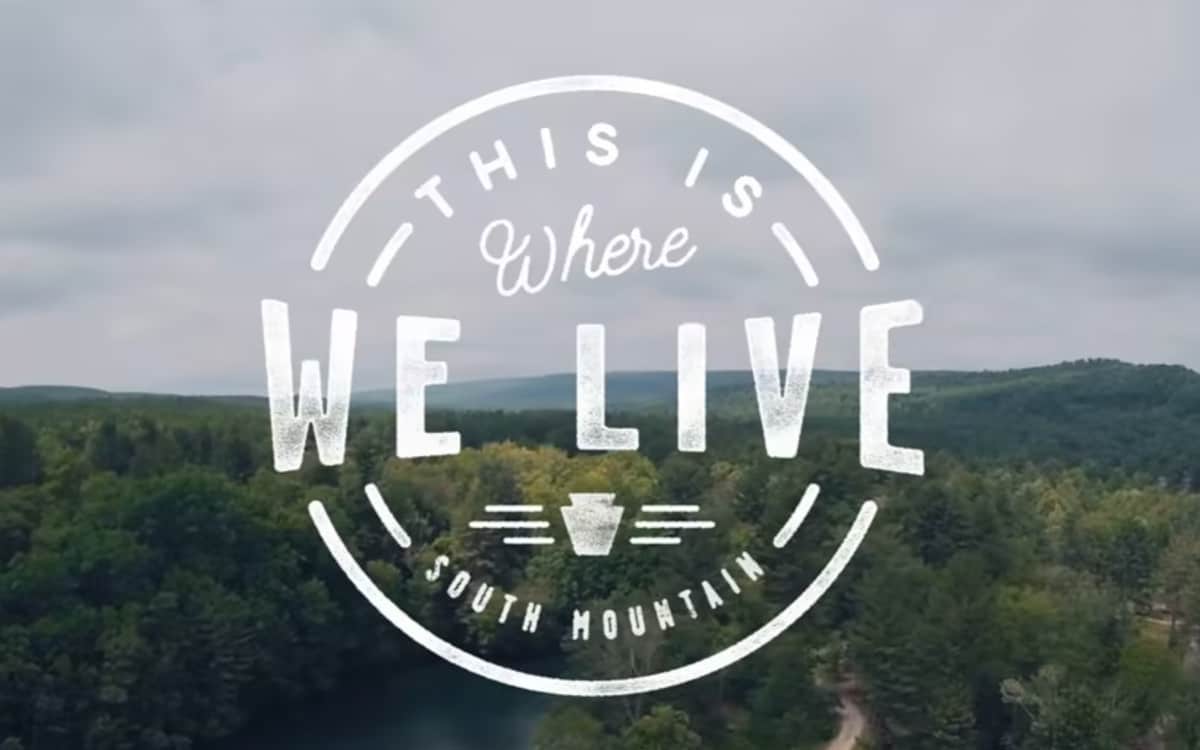
The ‘Spirit of South Mountain’ Award
Each year we recognize an individual, project, or organization that has made significant contributions to advancing a positive and sustainable future for the South Mountain landscape. The Spirit of South Mountain award is to be presented at the annual “Power of the Partnership” celebration.
Judging Criteria
Reflect the mission of South Mountain Partnership
“Conserving Landscape Resources to enrich the quality of life and sense of place of the South Mountain region’s citizens and communities
Advance the goals of the South Mountain Partnership
Conservation of Landscape Resources, Promotion of Landscape Resources, and Connections Across the Landscape.
Recent Winners
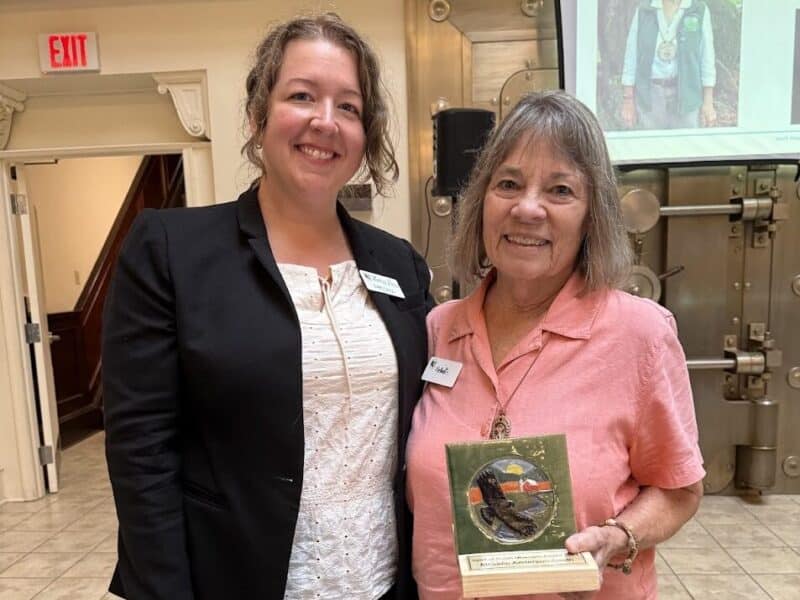
Get Involved
The South Mountain Partnership works best as a network of people and organizations working toward common goals. Becoming a partner is easy and free. Our partners commit to support the vision and mission of the Partnership and participate in these ways:
- Attend Partnership meetings and events
- Read Partnership e-newsletters, communications, and reports
- Share relevant information and participate when possible
- Keep the Partnership informed of their organization’s related activities
- Increase access to the natural, cultural, and recreational resources of our region to all people while also creating a welcoming community for all partners.
The Friends of the South Mountain Partnership (FOSMP) works to ensure the South Mountain Partnership is a resilient and powerful force for good in our region by fundraising for specific programs like our Flex Grants.
